Thanks to our members, supporters, and funders, fishing is underway at the fish trap near Cathlamet, WA. Since late-August, Wild Fish Conservancy (WFC), the Washington Department of Fish and Wildlife (WDFW), and local fishers have collaborated in an official Washington state test fishery to evaluate the performance of fish traps in a commercial, selective harvest setting. Each day of the test fishery, the fish trap is operated to serve a dual purpose of both research and sustainable harvest, benefiting management of the Columbia River’s salmon runs while contributing to Cathlamet’s commercial fishing economy.

Every morning, WFC works side-by-side with commercial fisherman Blair Peterson to deploy and operate the fish trap. With each passively captured fish, WFC and WDFW gather data that may be used by Columbia River management agencies for assessing population genetics, stock-composition, run-timing, lower river abundance, migration timing, and fish survival.
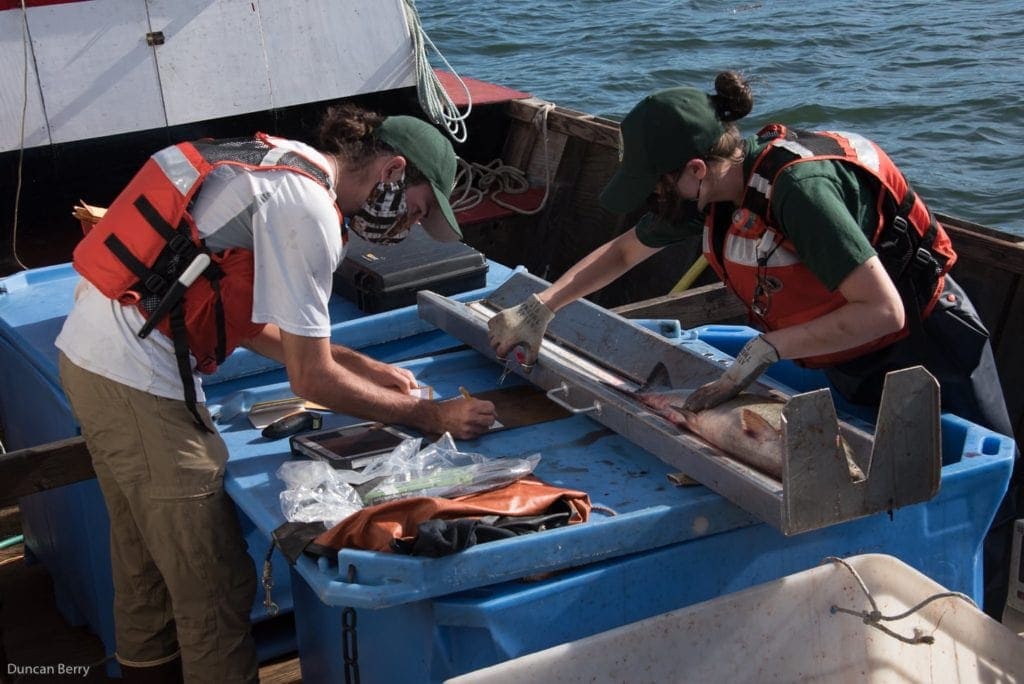
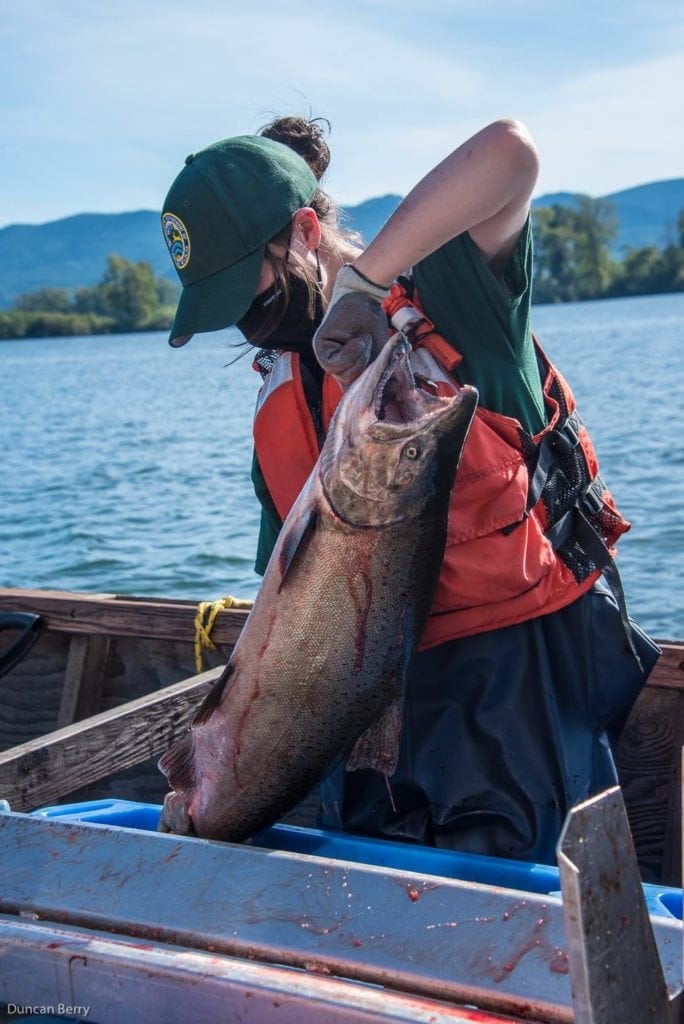
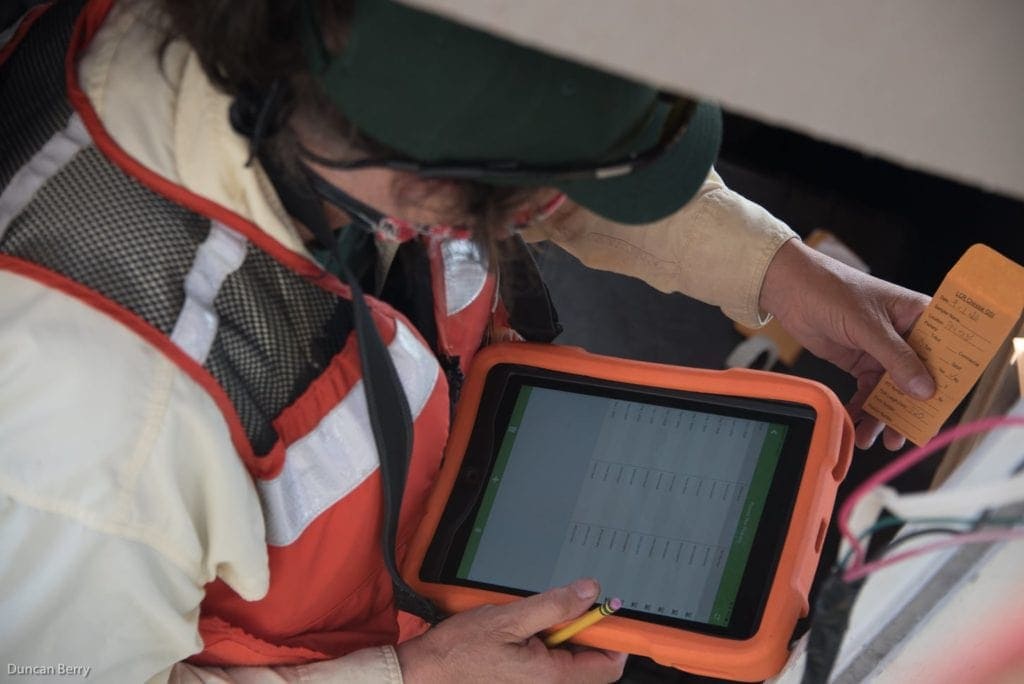
Hatchery Chinook and coho salmon that are encountered are selectively harvested by Blair Peterson, live-bled, iced, and delivered to local processor Mike Clark of CH Fish Company on nearby Puget Island. While benefiting the community of Cathlamet, the harvest of hatchery-origin salmon reduces genetic and ecological threats to wild salmonid populations of the Columbia River Basin.


All wild salmon, steelhead, and other bycatch stocks are released to resume the upriver migration to natal spawning grounds. These fish have been scientifically proven to survive post-release from the gear at rates near 100%.
Over eleven fishing days, the trap operation has sustainably removed roughly 8,000 lbs of hatchery-origin salmon. Approximately 2,000 non-target salmonids have been safely released without a single adult immediate mortality occurring.
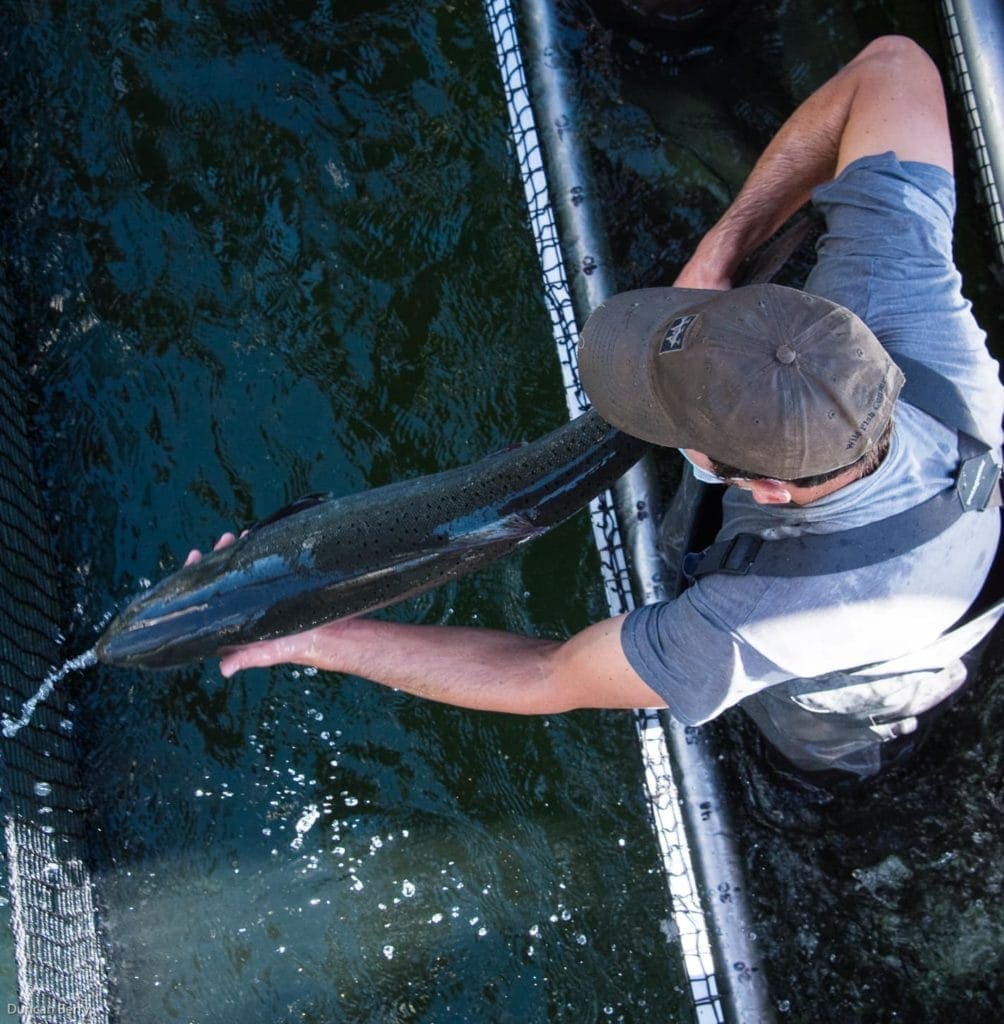
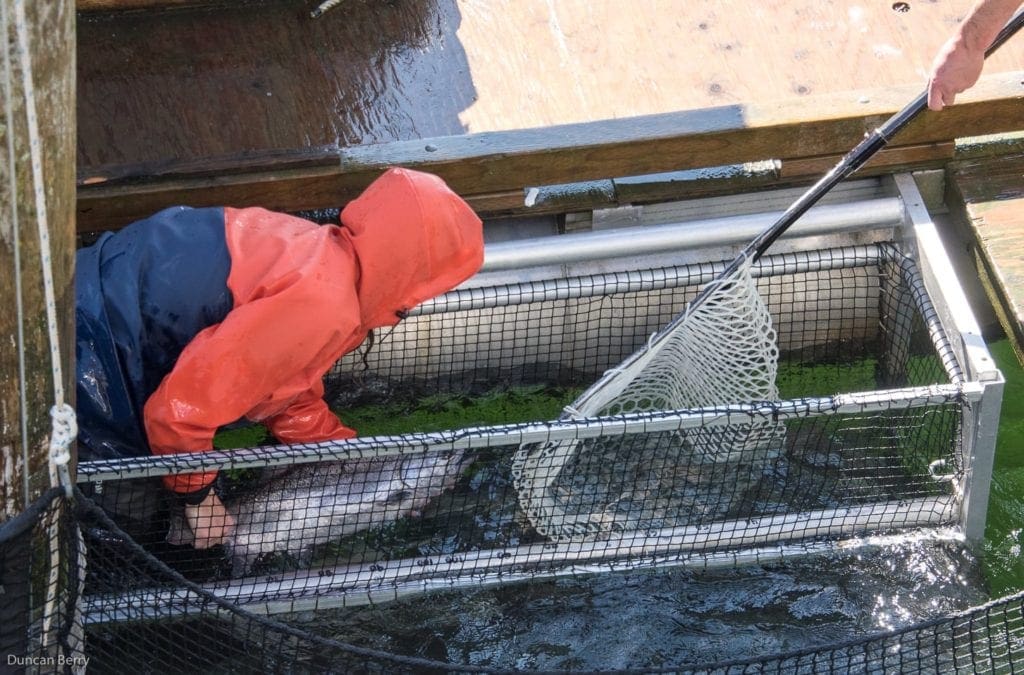
Although fishing has been temporarily postponed by the thick wildfire smoke that remains in the air throughout the Pacific Northwest, WFC and partners look forward to resuming operations and research later this week for the coho salmon run.
Join our mailing list to recieve important updates on our work, the latest wild fish news, & opportunities to take action to support wild fish.
This site is protected by reCAPTCHA and the Google Privacy Policy and Terms of Service apply.
Wild Fish Conservancy is recognized as a 501(c)3 non-profit by the IRS